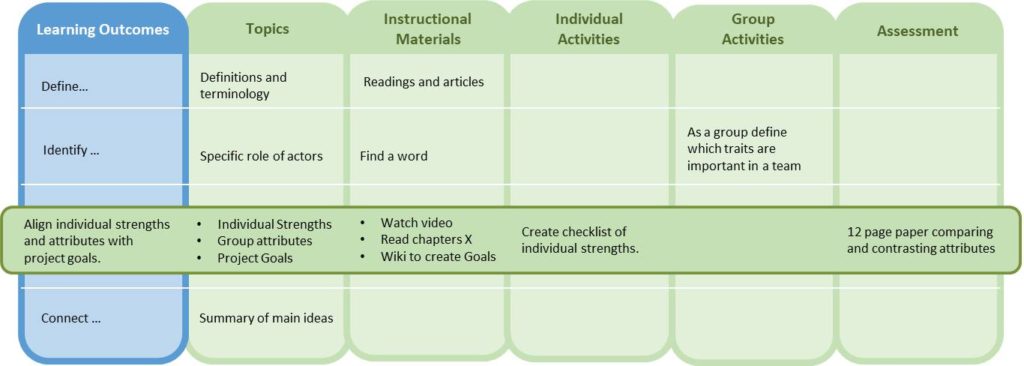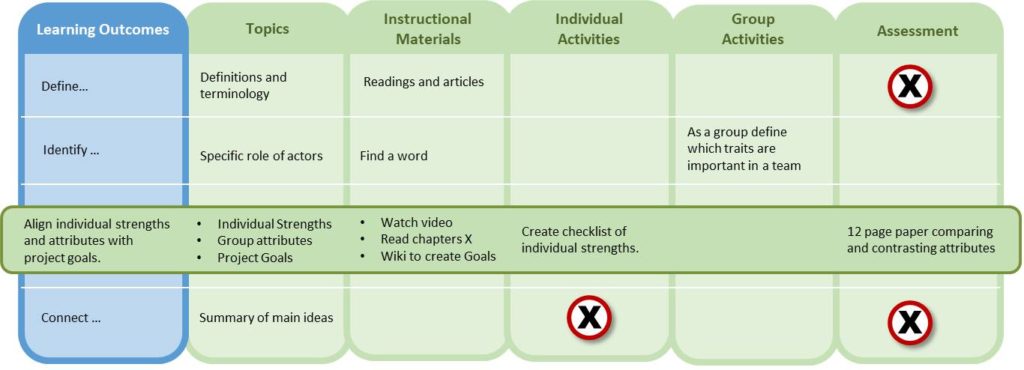Course development planning scares everyone. In fact, many educators hate the planning process altogether, especially when it comes to designing their first online course.
Why? Because there are learning outcomes that need to be written, topics created, instructional materials designed, individual and group activities produced, and assessments built.
Then of course, is the main book that you will use to supplement your course with, the articles that have to be found and vetted, Learning Management System software to be learned, video creation, and – well, I’m sure you get the point. Yup, it’s labor intensive, and the work never stops.
Enter the Course Development Plan (CDP). The CDP is essentially a planing tool that is built around the concept of “backwards design”. Backwards design begins with a learning outcome in mind and works backwards through mapping (i.e., matching and/or linking) the assessments to the activities, activities to the instructional materials, instructional materials to the topics and finally, topics to the learning outcomes.
Hmm? I know this may look and sound confusing, but lets take a closer look at this concept.
Start at the End
Backwards design is similar to mapping a trip. You first pick an destination (end), then you figure out how to get there based on your starting point and any detours that you are including.
Course development planning is very similar. You begin with identifying the learning outcome, then you determine how your learners will demonstrate their learning (assessment), proceed to define the projects that your learners will do – both individually and plenary (group), followed up with embedding the instructional strategies, materials, and finally mapping them to the topics and the learning outcome. Whew!
In a nut shell, the structure of the course development plan (CDP) has the following six items.
- Learning outcomes of the course.
- Assessments
- Individual activities.
- Group Activities.
- Instructional materials.
- Topics.
Backwards Design Setup – Correct

Let’s now take a look at how a Course Development Plan (CDP) looks like when strung together in the order that most instructors view their plan. This isn’t wrong; however, when putting together a course, it is best practice to use the Backwards Design order, rather than Forward Design setup.
Forward Design Setup – Usual method

When looking across the table, it is clear how the learning outcomes link to the topics, the topics link to the learning activities, and the learning activities link to the assessments, such as quizzes or assignments.
It also shows you if there are any gaps in the weekly setup.

Looking at this week, I have put in X’s where I think that a gap is presented. Now, not every space in the plan needs to be filled with content. Why? Because you do not want to overwhelm your learners with copious amounts of homework and tests.
It’s important to give your learners some breathing space – we also need to remember that everyone works towards finishing the tasks listed above at their own pace. That’s more than OK!



